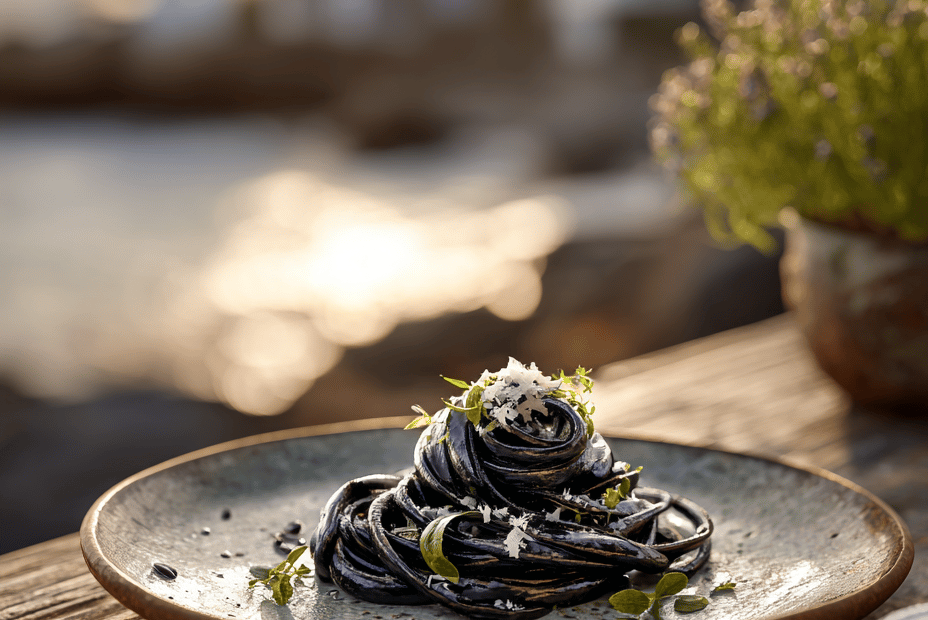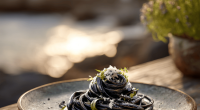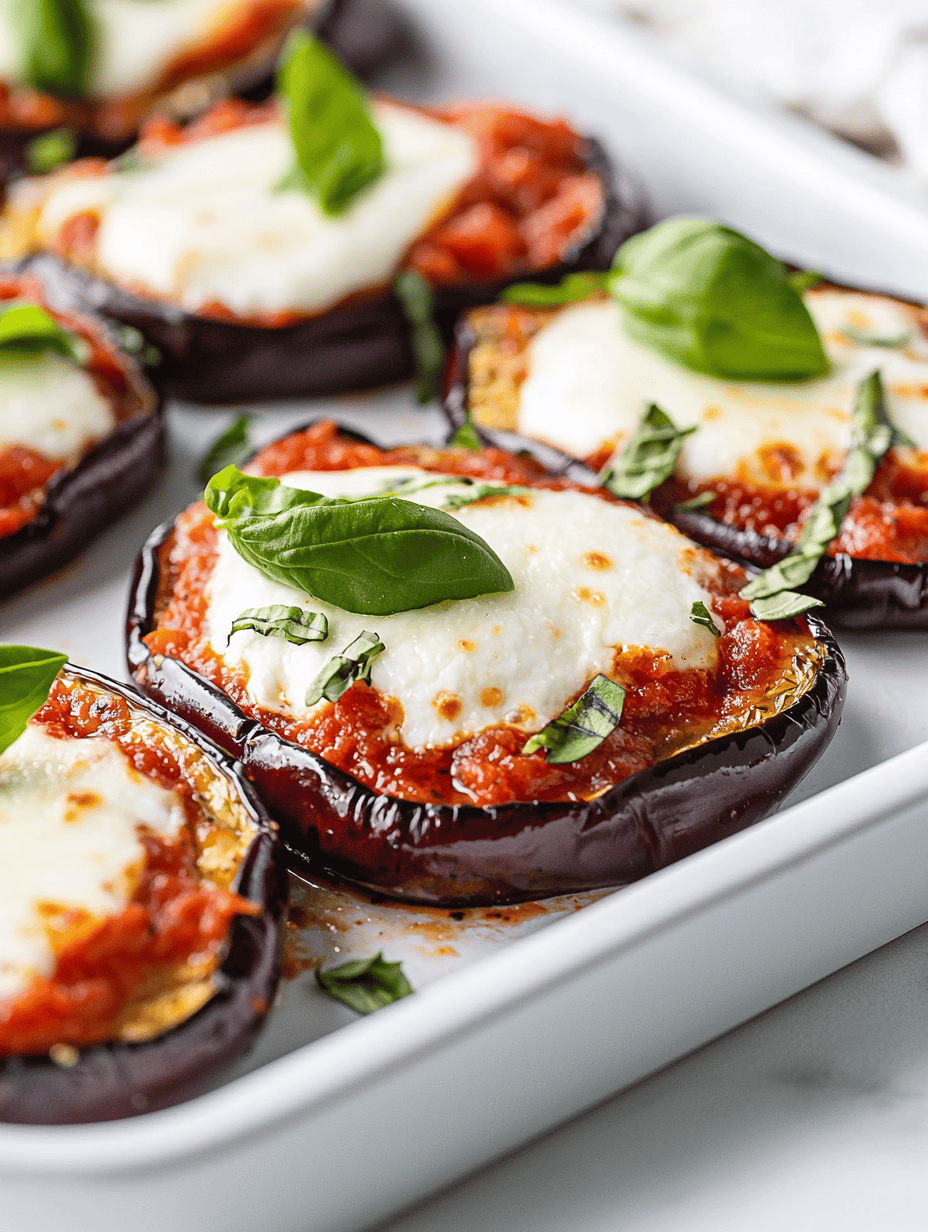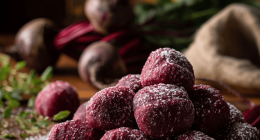Black pasta with squid ink is a dish I stumbled upon during a trip to a coastal town. Its vivid color and deep ocean flavor make it feel like a secret treasure, hidden in plain sight. I love how the ink transforms simple pasta into something theatrical, yet straightforward enough to whip up on a weeknight. It’s a reminder that great flavor often comes with a little eccentricity and a splash of the unexpected.
Why I keep returning to this black pasta
Its oceanic flavor and striking appearance never fail to surprise. It’s a dish I turn to when I crave something earthy, bold, and a little theatrical. Plus, it’s surprisingly simple to make, yet feels like a special occasion. Every time I cook it, I remember seaside trips and the thrill of discovering a dish that feels both mysterious and comforting.
What makes this dish tick: ingredients in detail
- Black pasta (or regular pasta with added squid ink): The base that carries the oceanic ink flavor and dramatic color.
- Squid ink: Briny, smoky, and slightly metallic—adds depth and a striking black hue.
- Garlic: Gives a fragrant, warming aroma, essential for balancing the ink’s intensity.
- White wine or pasta water: Adds acidity and helps loosen the sauce, creating a silky coating.
- Lemon juice: Brightens the dish with citrusy sharpness, counteracting richness.
- Fresh parsley: Adds a fresh, herbal note and vibrant color.
- Olive oil: The foundation for sautéing garlic and developing the ink sauce.
Tools of the trade for ink pasta
- Large pot: Boil the pasta evenly and efficiently.
- Wide skillet: Create a spacious surface to develop the ink sauce.
- Tongs or pasta fork: Toss and serve the pasta without breaking it.
- Ladle or small cup: Reserve pasta water for adjusting sauce consistency.
Step-by-step guide to perfect black pasta with ink flavor
Step 1: Fill a large pot with water, add a generous pinch of salt, and bring to a rolling boil (about 100°C / 212°F).
Step 2: Add the black pasta, stirring immediately to prevent sticking, cook for 8-10 minutes until al dente.
Step 3: Meanwhile, heat a splash of olive oil in a wide skillet over medium heat (about 160°C / 320°F).
Step 4: Add minced garlic, cook until fragrant—about 30 seconds—then add squid ink, stirring quickly. The ink will smell briny and smoky.
Step 5: Pour in a splash of white wine or a bit of pasta water to loosen the ink, cook until slightly reduced—about 2 minutes.
Step 6: Drain pasta, reserving a cup of pasta water. Toss pasta into the ink sauce, adding reserved water to achieve silky, glossy strands.
Step 7: Finish with a squeeze of lemon juice and a sprinkle of chopped parsley for brightness.
Cooking checkpoints and tips for success
- Pasta should be cooked al dente, still slightly firm to bite, not mushy.
- The ink sauce needs to be fragrant and slightly thickened, not watery.
- Look for a glossy, jet-black appearance on the pasta—this is your visual cue.
- If the sauce looks dull or streaky, add a splash more pasta water and toss again.
Common pitfalls and how to fix them
- Burnt ink flavor and smoky smell.? OVER-TORCHED THE INK SAUCE — Reduce heat immediately and add a splash of wine or water.
- Clumpy, sticky pasta.? Pasta STICKS TOGETHER — Stir during cooking and add a little more salt to the water.
- Lack of glossy, cohesive sauce.? SAUCE IS TOO THIN — Cook it down a minute longer or add a touch more pasta water.
- Flat, dull flavor.? LACK OF BRIGHTNESS — Squeeze fresh lemon just before serving for a zesty lift.
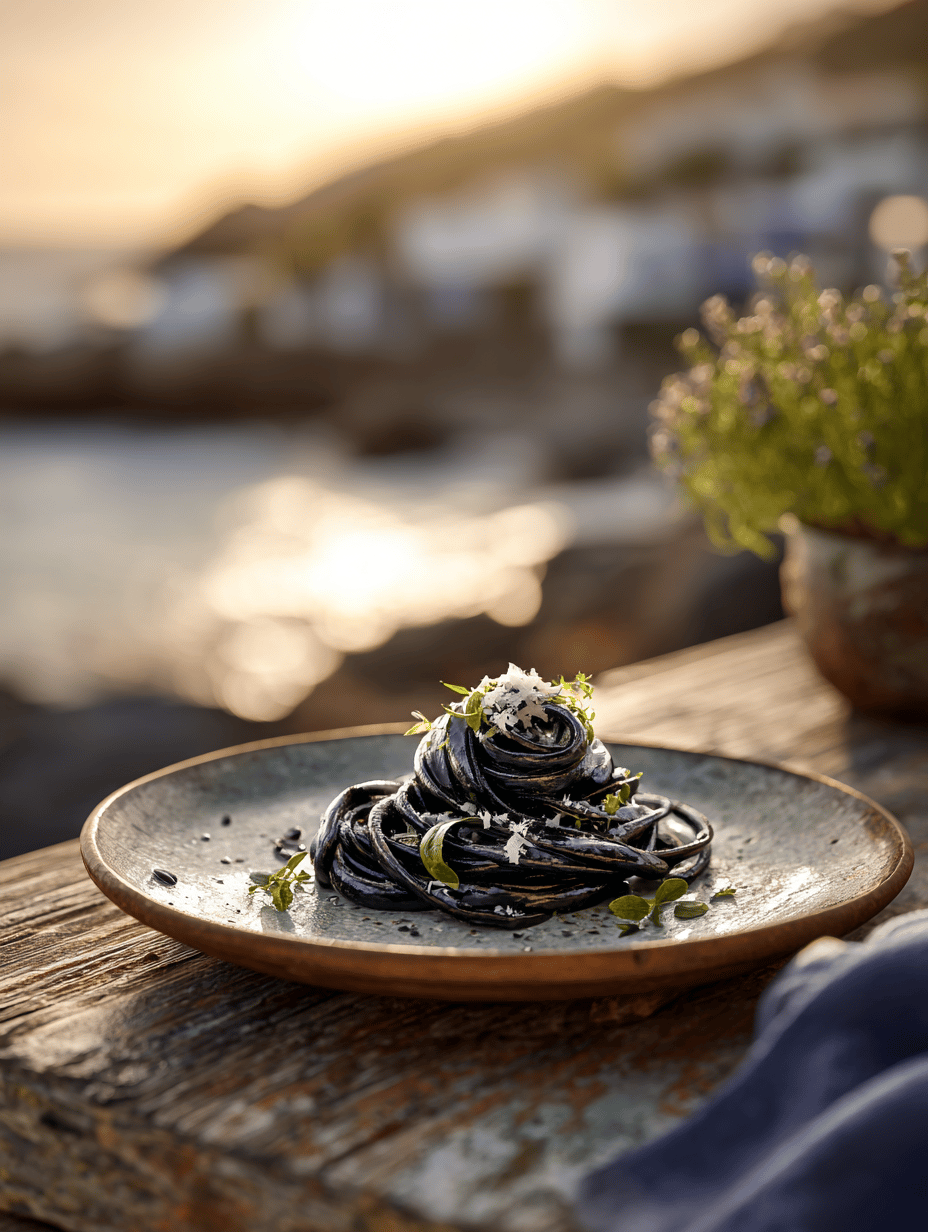
Black Pasta with Squid Ink
Ingredients
Equipment
Method
- Fill a large pot with water, add a generous pinch of salt, and bring to a rolling boil.
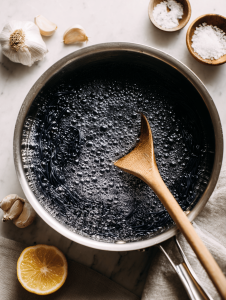
- Add the black pasta to the boiling water, stirring immediately to prevent sticking. Cook for 8-10 minutes until al dente, with a firm bite and a glossy, deep black color.
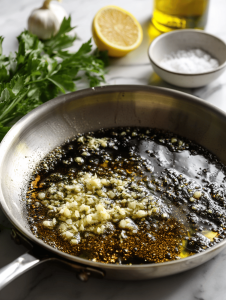
- Meanwhile, heat olive oil in a wide skillet over medium heat until shimmering and fragrant.
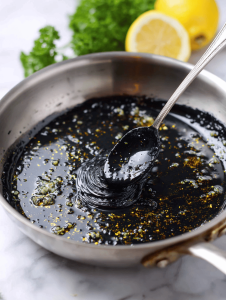
- Add the minced garlic to the skillet, sauté until fragrant and lightly golden, about 30 seconds. The kitchen should smell aromatic and inviting.
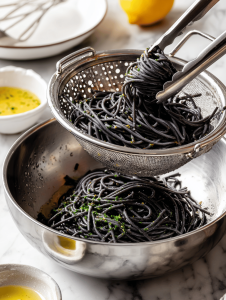
- Quickly add the squid ink to the skillet, stirring vigorously to combine with the garlic and oil. The ink will release a briny aroma and turn the mixture dark and glossy.
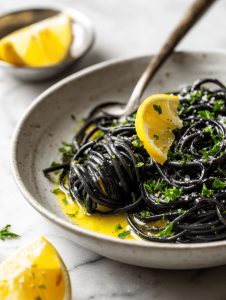
- Pour in a splash of white wine or reserved pasta water, stirring to loosen the ink sauce. Let it simmer gently for about 2 minutes until slightly thickened and fragrant.
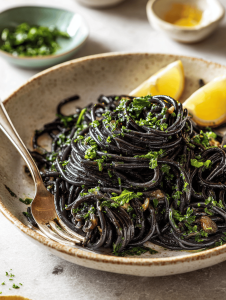
- Drain the cooked pasta, reserving about a cup of pasta water. Add the pasta directly into the skillet with the ink sauce, tossing gently to coat the strands evenly.
- Add a little reserved pasta water if needed to achieve a silky, glossy coating on the pasta. The sauce should cling smoothly to each strand, with a deep black hue.
- Squeeze fresh lemon juice over the pasta and sprinkle chopped parsley on top. Toss gently to distribute the brightness and herbal notes evenly.
- Serve immediately, garnished with extra parsley if desired, for a striking presentation and oceanic flavor that’s both theatrical and satisfying.
Notes

Hi, I’m Hannah Reynolds, the creator and heart behind Seasoning Therapist. Born and raised in the United States, I grew up in a family where the kitchen was always the coziest gathering spot.

